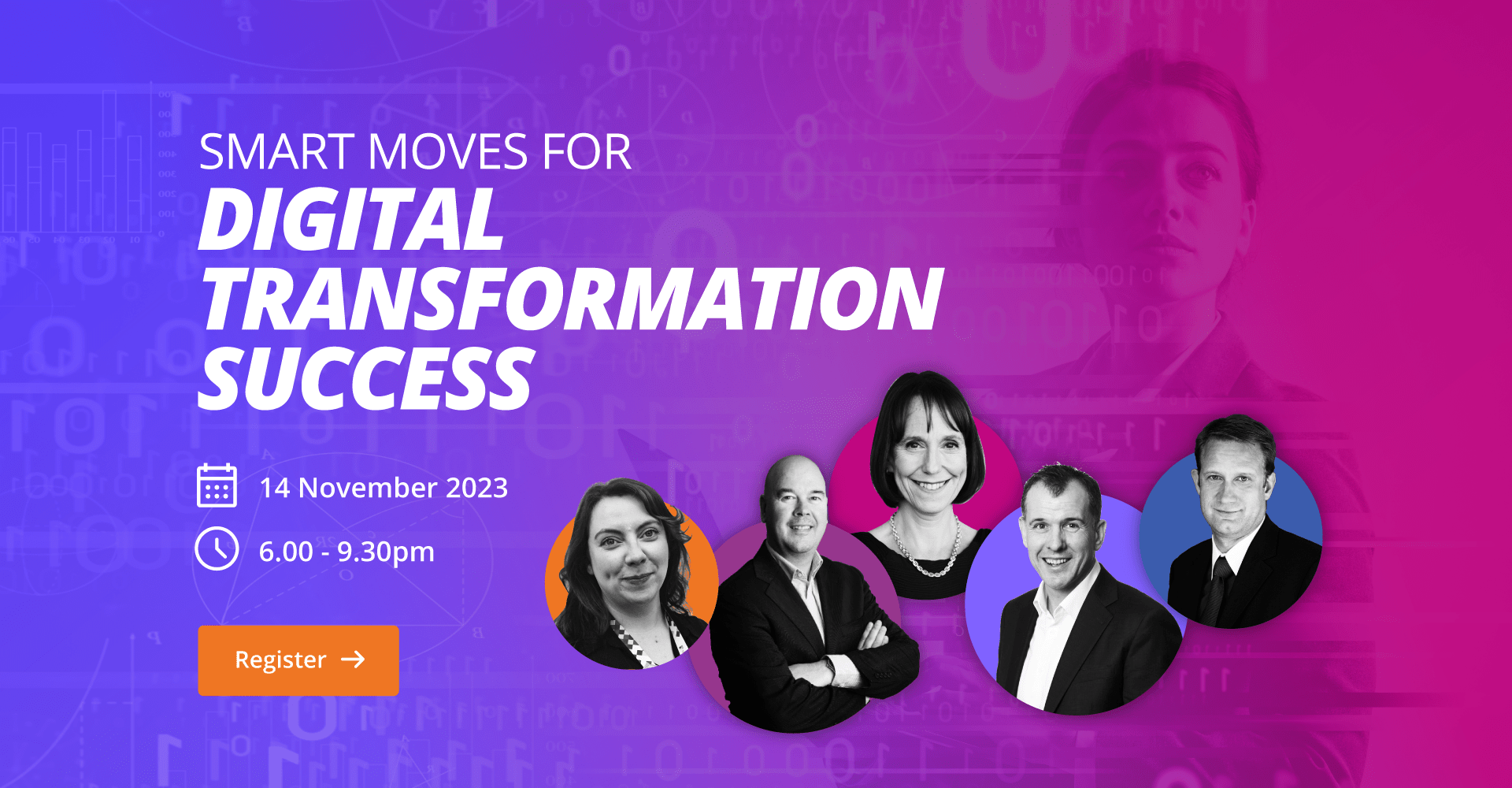Almost all businesses, whether corner shop or global enterprise, has had to embark on some kind of digital journey, but the question many organisations have is, ‘where do we go from here?’ Enterprises have seen successes and failures in digital transformation, and they want to move to the next stage of their digital development.
Digital Transformation in 2023 is about prioritisation and avoiding transformation paralysis.
This next step isn’t about moving payments to the cloud or even rolling out a multi-national ERP system. It is about creating a foundation for continual transformation and driving organisational re-alignment. The time is right for enterprises to look at where they are on their digital journey and explore how they can accelerate and expedite continual digital adoption and evolution.
The concept of “Digital Transformation” is just over a decade old. If you look at Google’s Ngram Viewer, you’ll see that the term only really begins to gain traction in 2013. Over the last 10 years, digital transformation has gone from a nascent trend to mission-critical and a competitive advantage.
This is only going to accelerate as automation and artificial intelligence (AI) ramp up within vertical industries. Agile digital adopters are going to move with greater speed to deploy new solutions that immediately give them an advantage in their given segment. Organisations that automate processes and use AI have greater resources to invest back into their businesses, while making precise decisions at scale.
PwC estimates that AI will make a $15.7 trillion possible contribution to the global economy by 2030. It has the potential to deliver a 26% boost in GDP for local economies over the same timeframe. The enterprises that are going to take advantage of this revolution in ICT, and whatever comes next, are the ones that are making moves within their organisations now. The enterprises that are hesitating or don’t have a clear digital strategy or foundation are either going to be continually playing catch-up or potentially face irrelevancy.
Aligning Business Success with Transformation Goals
The risk for mid-sized enterprises is that they invest in the wrong technologies at the wrong time. Before making any investments in digital transformation, mid-size enterprises have to look at what they want to achieve with their digital strategy. CTOs can play a pivotal role in leading an organisation’s growth by bringing the executive team together, assessing new opportunities and demonstrating value in the near and long-term.
Technology is not separate from business plans or strategic execution. It is now central to it. The CTO has to be involved and have an aligned business strategy with digital adoption. Rather than being viewed as a cost centre, technology is an enabler for productivity, agility, and profitability. It should align with the organisation’s overarching goals.
This shift in mindset also affects how tech investments are made. Digital solutions should be purchased, deployed and measured holistically across the organisation. Failure to do this creates silos of decision making and treats digital transformation like it is only for the IT department, when benefits cascade across the entire organisation. Investments in new technology should be evaluated from a broader perspective and their value has to be measured with a much wider lens than has happened previously.
When digital transformation fails, it fails because multiple projects are launched in isolation with the support of multiple providers. From planning to deployment through to optimisation and expansion, there has to be collaboration, continuity, and connectivity bringing the digital strategy into alignment. As organisations deploy a range of applications across multiple clouds, networking has become critical for transformation success. How you connect and manage applications in an increasingly complex environment has a direct impact on how users experience their services.
Network as a Service (NaaS) platforms enable organisations to simplify how they connect applications and services and provide a foundation for growing digital adoption. They give an IT organisation a holistic and transparent view of their networking environment while enabling them to manage multi-cloud seamlessly. In an enterprise environment that is increasingly complex, NaaS can be the central enabler for digital adoption and transformation success.
You Cannot Allow Your Business to be Disrupted into Digital Transformation
What is critical is the mid-sized enterprise recognising this opportunity and building a foundation with NaaS now. They have to be prepared to change to capture the opportunities of the future. Inaction or transformation paralysis, where an organisation takes a ‘wait and see’ approach, will lead to greater challenges in the long-term. Although transforming an organisation is never easy, it delivers exponential rewards over time.
We’ve seen this on Epsilon’s own digital journey. Our heritage is in global networking, which used to mean physically plugging in network hardware and deploying services across a global footprint. The sales team would send pricing to a customer in an excel spreadsheet, and when an agreement was reached, an engineer on the ground in a customer’s data centre would cross-connect networks.
All processes were manual, offline, and complicated to manage. Nevertheless, we grew our business based on customer support, being as agile as we could within these systems, and going the extra mile for customers.
It was a good business, and we were proud of our work, but we knew we had to change. We realised we had to transform our processes to capture the next generation of opportunities. Epsilon couldn’t be a challenger brand, and compete with the largest network service providers in the world, without challenging ourselves to push our business further and refocus on our digital strategy.
Instead of delivering more of the same, we set out to be a software-centric business, utilising the digital experience to better serve our customers whilst delivering internal efficiencies and speed of service delivery. Many service providers at the time were still focused on network footprint and ‘landing and expanding’ in more markets than competitors. Whilst we of course continued to evolve our service coverage, we had to be more agile, innovative and offer new digital experiences. We needed to go beyond the basics and accelerate change in order to give users greater control over their network services.
Your Network Shapes the Experiences You Can Deliver
Our digital transformation started from the top down. The Epsilon leadership team understood the opportunity in digitalising our processes and what it would mean to the future of our business. Fundamentally, we’ve always believed that there are bigger risks in inaction than there are in making bold moves.
Our leadership team refined our business organisation, looked at talent and resourcing as a driver for change, and invested in process analysis and software development. Rather than sinking investment into networks, we looked at how we could be more fluid, flexible and agile by prioritising of platforms, partners, and APIs.
This freed us to develop new services and processes with greater agility. We can move faster to integrate partners into our platform, add new networks to our offering and connect more cloud service providers, while expanding our capabilities.
We removed the friction caused by legacy processes by understanding where data resides and where it needs to interact, then we built the toolsets to manage the data and interfaces to interwork the data. This then cascaded across our organisation and the performance improvement was then reflected in our customers’ digital experiences. We’ve reduced the barriers between our services and our users via APIs and a web-based portal. The days of sending an excel spreadsheet to customers are over.
Users have control over their services with transparency and visibility into usage. They have an interface that is easy to use, with a model that is still rooted in Epsilon’s heritage of customer service excellence.
Building the Foundation for Continual Transformation
Our own digital transformation wasn’t easy, but today we’re ready to adapt, change and continually transform our business. The result of our transformation and digital strategy is a NaaS platform that gives users a single pane of glass for procuring, managing, and optimising global connectivity. It offers a single platform for connecting applications and services around the world and into the cloud on-demand and at the click-of-a-button. NaaS gives users the freedom to roll out new solutions, scale-up in new markets and move faster to capture emerging growth opportunities.
NaaS is the foundation for maximising the value of Software as a Service (SaaS), Platform as a Service (PaaS) and Anything as a Service (XaaS). The attributes of an enterprise’s network cascade across the value chain and enable agility, flexibility and adaptability across other applications and services. In this way, it prepares an organisation to develop and deploy new solutions no matter how the business evolves. NaaS is the cornerstone of continual transformation as enterprises evolve to meet the needs of today’s market, then evolve again as market conditions change.
The market is being reimagined by AI in 2023, but next year some new disruptive forces will emerge. The key is that an organisation understands the value of networking and takes action now to prepare for an uncertain future that is full of both opportunity and challenges.
So where do we go from here?
Look for leadership in digital transformation from the top down and execution from your modern digital network up. By understanding your business application and service environment, and the data it produces, you can design a business architecture where everything that is built on the network will share its characteristics. If the network and associated technologies are ready to adapt and enable transformation, then the enterprise will be ready to adapt and transform on a continual basis for the long-term.
Author : Mark Daley, Director of Digital Strategy and Business Development, Epsilon Telecommunications








